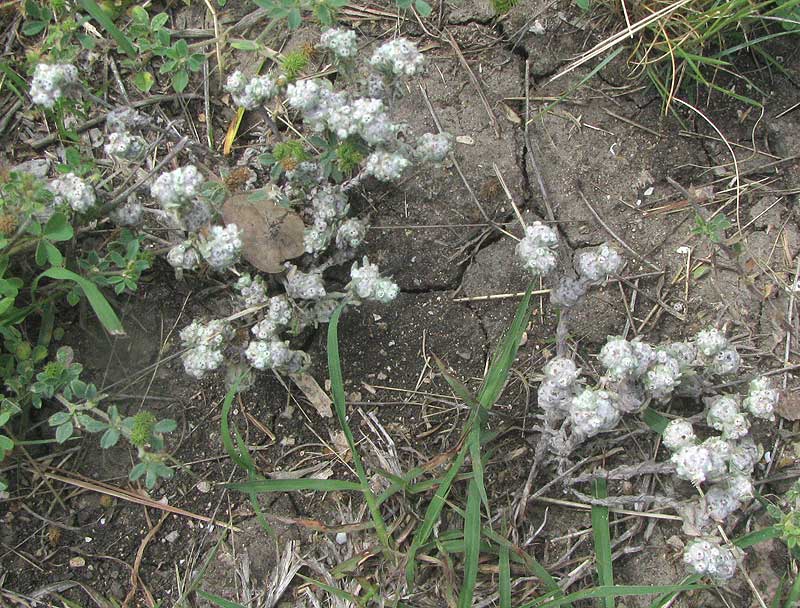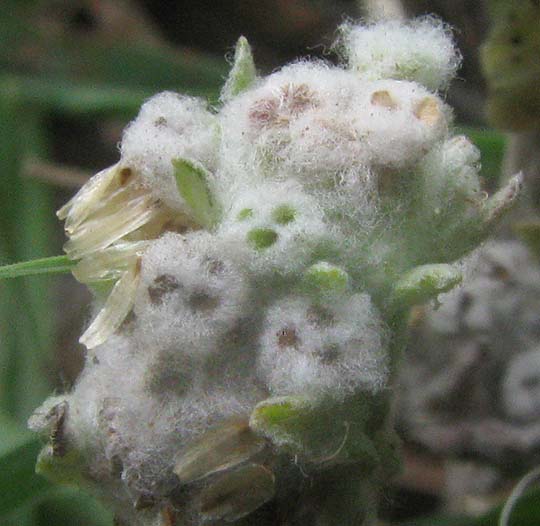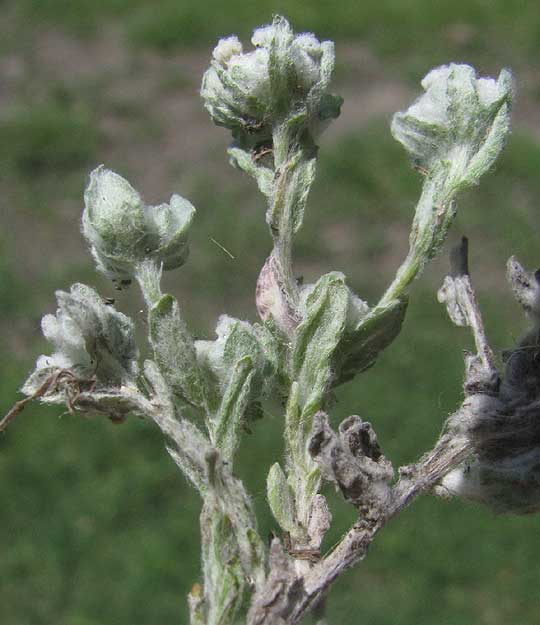Excerpts from Jim Conrad's
Naturalist Newsletter

from the June 16, 2013 Newsletter issued from the valley of the Dry Frio River in northern Uvalde County, southwestern Texas, on the southern border of the Edwards Plateau; elevation ~1750m (~5750 ft); N29.62°, W99.86°; USA
SPRING PYGMYCUDWEED
Behind the cabin there's a population of small herbs so short and ground-hugging that the landowner's lawnmower didn't get them, and the plants are so thickly woolly with cobwebby hairs that you can't make much of them. You can see what they look like above.
I've been watching the plants for weeks, expecting flowers to emerge from the cottony balls, but when they didn't I took a close look and decided that maybe they'd already flowered, down in the fuzz. You can see a 3/8ths-inch-wide (7mm) cluster of what I figured were flower heads below:

The same structure is viewed from the side below:

Teasing apart several such heads, I couldn't really find anything that looked like flowers, everything being obscured by white cotton. One feature about the plant I could indeed determine was that the stems branched in a somewhat "dichasiform" manner -- the stem makes a Y, then each arm of the Y also splits to form a Y. The branching isn't perfectly dichasiform, just generally so, as you can see below:

The super woolly stems and leaves reminded me of the Rabbit Tobacco we looked at in our November 25th Newsletter. You can see Rabbit Tobacco at http://www.backyardnature.net/n/h/rabbit-t.htm.
Therefore, guessing that this Lilliputian backyard plant might be related to Rabbit Tobacco, in the online Flora of North America I went to the group, or "tribe," of the Composite or Daisy Family in which Rabbit Tobacco is a member, and eventually figured out that our mysterious, super-woolly little plant is something listed in books as Spring Pygmycudweed or Many-stemmed Rabbit Tobacco. It's DIAPERIA VERNA, occurring in arid northern Mexico and the southernmost tier of US states, from coast to coast.
I suppose that beneath a dissecting scope and using needle-tipped probes one could eventually identify the flowers' parts. However, with my weak eyes and fumbling fingers, this is one plant I'm learning by the habit of its body, and not the geometry of its blossoms.